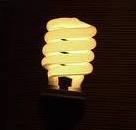
Chief Financial Officers typical expect energy saving projects to have an average internal rate of return of investment of about 20%. A recent research of the Carbon Trust, a UK non-profit organisation, among 1000 british companies showed however that the average IRR was actually 48%, in half of the cases the investment was payed back within the year.
There is a perception that energy is not a big business cost and there is often a lack of experts within a firm to address the issues involved. Manufacturers press on installment of newer, more efficient, equipment. Although more efficient engines, for example, may save a lot of energy over their life time, carbon emissions of producing the engine and installing it are first go up. Sometimes it may be more cost and resource efficient to upgrade an maintain machines and have a much higher IRR and create funds to keep on improving.
Organizations start typically with the utility bill but that doesn’t recognize the consumption of individual processes or equipment. Sub-metering is in place to find the biggies. People expect machines to consume the same during their live but h much machines consumes changes over their lifetime for instance compressed air pipes and hoses start leaking and consume significant more energy to do the same job.
Investments in solar, wind or biomass energy not only save on the electricity bill. It is often more beneficial to sell it back to the grid. The premium in european countries like the UK and Spain can be a couple of times the cost of buying energy from the grid. One of the Belgium factories of L’oreal, which is situated in the country site, buys up dung to make methane gas out of it which feeds three electricity generators. The steam is used to heat the processes in the cosmetic plant. The biogass plant is over dimensioned for the time being and excess energy sold to the grid, supplying 4500 houses with electricity. 8700 tons of emissions of cabon equivalents are saved every year.
What goes for energy is the same for water. Not only is a lot of energy and water needed to make drinking or industrial water, reducing water can save a lot of carbon emission. Every kwH energy saved saves about 0,4-0,7 kg carbon equivalents to be emitted, depending on the country energy mix. One cubic meter of demineralized water saved saved 0,8 kg carbon emission. And in a bit of a factory it quickly adds up.

Comments by our Users
Be the first to write a comment for this item.